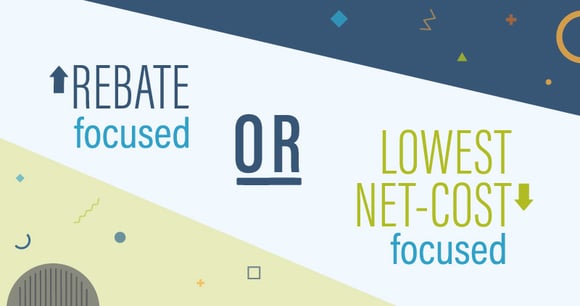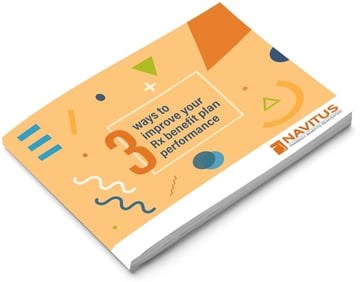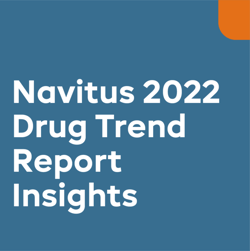Managing your formulary and drug mix is critical to your pharmacy benefit plan’s performance. Unnecessary costs can multiply if left unchecked. Here are two main philosophies you can use to guide your formulary drug choices.
Here, a PBM may be using rebates to generate revenue for itself, since some PBMs keep a percentage of the rebates. So the PBM could be incentivized to promote higher rebated drugs that may cost you more.A lowest-net-cost philosophy provides clinically sound, cost-effective alternatives, such as generics or less expensive brands, to drive down costs. It uses rebates and a lower average wholesale price (AWP) starting point to lower your all-in per member per month (PMPM) costs.
Here, a PBM is not keeping a percentage of the rebates as revenue, so it’s not incentivized to promote high rebated, high cost drugs.
WHAT ARE WASTEFUL DRUGS?
A recent article noted, “Both branded and generic drugs can be wasteful. There is a financial incentive for PBMs to prefer drugs with high prices and large rebates or large spreads, which often results in having wasteful drugs on the formulary.”1
So how do different drugs compare when using a rebate focused versus a lowest-net-cost formulary? If you do the math on both scenarios, it becomes clear which philosophy offers the lowest cost. In the per claim cost analysis below, the higher rebated drug still costs more than the alternative medication.
In the chart below: Which would you rather buy, the $821.26 version or the $14.50 equivalent drug? Smart consumers know a good deal when they see one, and will go for the $14.50 product.
To shed light on the cost impact, a recent “analysis of 6 months of drug utilization of 15 large self-insured plan sponsors was performed by the Pacific Business Group on Health and Integrity Pharmaceutical Advisors.2 They examined more than 2.5 million scripts and found that 6% of all drug claims were for wasteful drugs. Wasteful drug claims represented 3-24% of companies’ total spend on drug benefits, depending on which drugs were included in the formulary and how often they were utilized.3
*Navitus internal data analysis. Assumes a 50% rebate. This number could be higher or lower, but still costs more than the lowest-net-cost model drug.
STRATEGIES YOU CAN USE TO OPTIMIZE YOUR FORMULARY
Choosing the right formulary product mix can significantly lower your costs. Ask your PBM for guidance on which drugs to include in your formulary. Make sure the drugs selected deliver lower costs when compared to brand name drugs that have higher rebates. Then, ask for an analysis to see the difference in cost savings between the two. If your PBM is more rigid and reluctant to change the drugs on your formulary, then ask them for a higher percentage of the rebate dollars.
It’s important to note that a pass-through PBM doesn’t keep a percentage of rebates as a part of its revenue, so it can recommend lower cost alternatives using a lowest-net-cost formulary. In a traditional model, achieving higher rebates means the PBM can take in more revenue, which incentivizes them to focus on higher cost drugs, or what’s referred to as a ‘rebate focused’ formulary, over less expensive medications.
WANT TO LEARN MORE STRATEGIES TO LOWER YOUR RX BENEFIT COSTS?
Within any pharmacy benefit plan, there are three key areas that you can fine tune to improve your overall plan performance and increase savings. Learn more in our e-book: 3 Ways to Improve Your Rx Benefit Plan Performance.

- Formulary Management
- Utilization Management (UM)
- Channel Management
1,3 Removing Waste From Drug Formularies, Pacific Business Group on Health (PBGH), Gerard Anderson, Ph.D., Thomas Cordeiro, R.Ph., Mariana Socal, M.D. Ph.D., Lauren Vela, M.B.A., October 2019, www.pbgh.org/storage/documents/publications/wasteful_drugs_guidebook_oct%2031_2019_final_digital.pdf Accessed June 2020.
2 Reducing Wasteful Spending in Employers’ Pharmacy Benefit Plans, Lauren Vela, M.B.A. The Commonwealth Fund. Issue Brief, August 2019. www.commonwealthfund.org/publications/issue-briefs/2019/aug/reducing-wasteful-spending-employers-pharmacy-benefit-plans Accessed June 2020.





